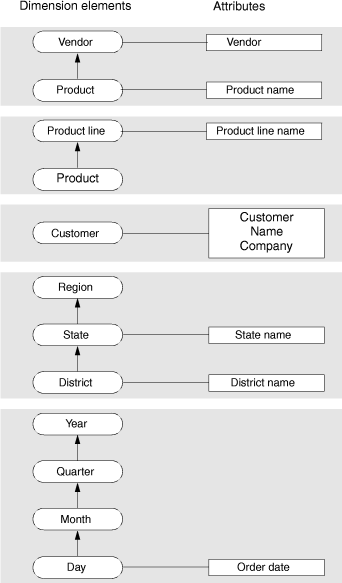
After you determine the granularity of the fact table, it is easy to identify the primary dimensions for the data model because each component that defines the granularity corresponds to a dimension. Figure 40 shows the relationship between the granularity of the fact table and the dimensions of the data model.

With the dimensions (customer, product, geography, time) for the data model in place, the schema diagram begins to take shape.
You can now map out dimension elements and hierarchies for each dimension. Figure 41 shows the relationships among dimensions, dimension elements, and the inherent hierarchies.

In most cases, the dimension elements need to express the lowest possible granularity for each dimension, not because queries need to access individual low-level records, but because queries need to cut through the database in precise ways. In other words, even though the questions that a data warehousing environment poses are usually broad, these questions still depend on the lowest level of product detail.
Home | [ Top of Page | Previous Page | Next Page | Contents | Index ]